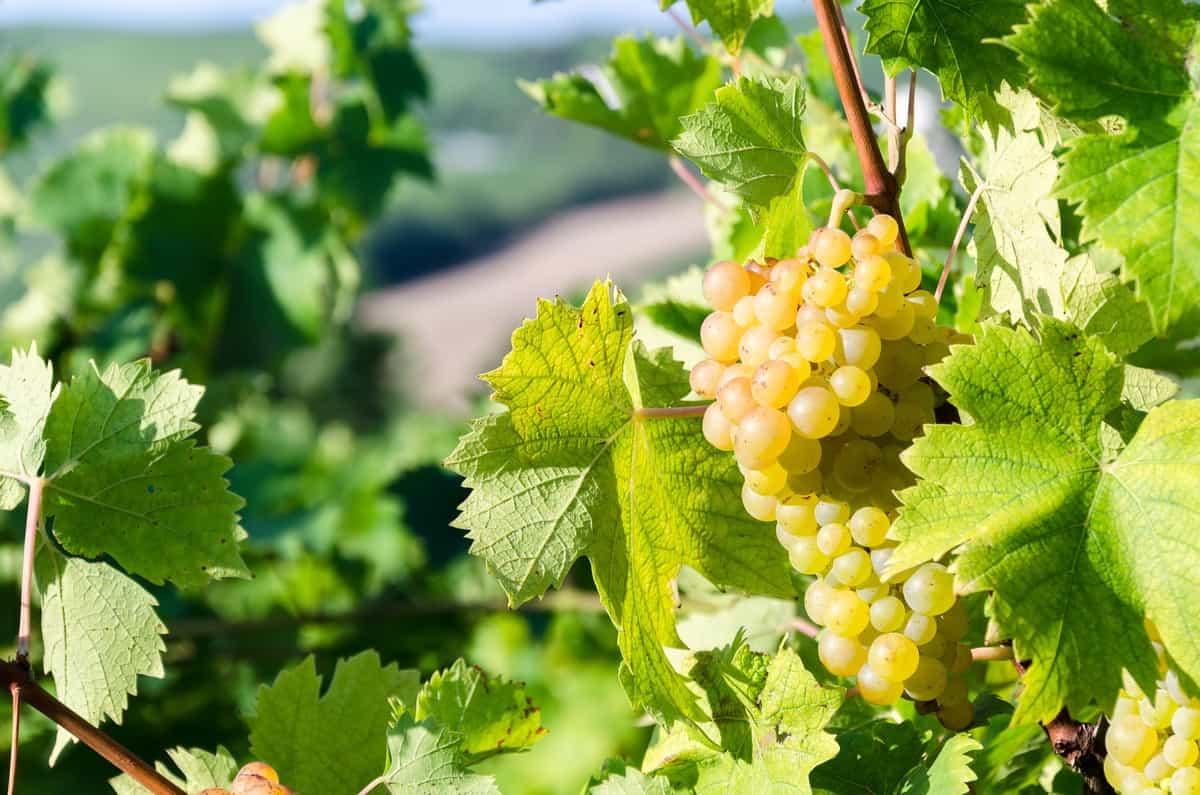Low alcohol, fragrant, and incredibly versatile. Moscato d’Asti is a wine that tastes like summer. Yet, it is mainly consumed at Christmas, alongside panettone, a winning but limiting combination. We enjoy Moscato d’Asti throughout the meal. Some in our office persist in pairing it with mozzarella di bufala (buffalo mozzarella), a combination not for everyone but with its own merits. Recently, we tested it with one of summer's dishes: tomato and peach salad. Fantastic, give it a try and you'll see. The fruity notes complement each other perfectly.
We worked on a selection of 10 Moscato d’Asti wines from the 2022 vintage, with the best value for money . We believe the best versions are at their peak two years after the vintage, and producers like Ca’d’Gal have also demonstrated the surprising aging potential of some small productions. Of course, we are talking about an aromatic variety that gives rise to a sparkling wine with immediate floral and fruity notes, well-supported by an acidic vein and increasingly well-balanced sweetness.
We also highlight an outstanding wine that is not on the list because it costs a couple of euros more: the Moscato d’Asti Canelli Casa di Bianca 2022 by Gianni Doglia, a wine of pure class, awarded Tre Bicchieri in the latest Gambero Rosso Italian Wines guide.

The best value Moscato d'Asti wines
Ca'd'Gal’s entire production revolves around Moscato d'Asti, located in the heart of the aromatic grape’s terroir. In Valdivilla, a hamlet of Santo Stefano Belbo, the Boido family has revived sweet sparkling wines based on Moscato. The Lumine from the 2022 vintage, awarded as the best value-for-money national sweet wine in the Berebene 2024 Gambero Rosso guide, is alluring with peach and sage tones; it follows with a classic palate, fresh, fine, and balanced. The perlage is creamy, and the sweetness is perfectly calibrated: the result is a Moscato d'Asti that is irresistibly drinkable!
The Moscato d'Asti Canelli Tenuta del Fant '22 offers mint, sage, and lime on the nose, while the palate is classic, taut, and very refined, with a long and characterful finish. The vineyards of Tenuta Il Falchetto, six in total, are located between the provinces of Cuneo and Asti, in the municipalities of Santo Stefano Belbo, Castiglione Tinella, Agliano Terme, and Calosso. The Forno brothers, Giorgio, Fabrizio, and Adriano, are committed to enhancing Barbera and Moscato, which give rise to their most well-known labels, but they also produce other Piedmontese and international grape varieties such as Dolcetto, Chardonnay, Cabernet Sauvignon, Merlot, and Pinot Noir. The result is a wide range of expressive wines that strongly adhere to the character of the territory.
The Moscato d'Asti Canelli SiFaSol '20 is intense with notes of medicinal herbs and citrus, peach, and mint, resulting in a wine of great finesse, complexity, and balance, thanks especially to the lively acidity that supports the long finish. The Scagliola family owns about 20 hectares of vineyards, from the historic vines of Canelli to those acquired over the years in Calosso and Santo Stefano Belbo, now offering about fifteen labels, including Classic Method sparkling wines, Barbera, and Moscato.
The Moscato d'Asti Prá Dône reveals notes of aromatic herbs, chlorophyll, and ripe white fruit on the nose, while the palate is fresh, fruity, with marked acidity, easy to drink. The Cascina Galarin, owned by the Carosso family since the late 1700s, comprises eight hectares of vineyards, largely composed of old vines and managed organically.
The Moscato d'Asti '22 by Cascina Guido Berta presents floral notes, cinnamon, candied citron, and citrus cream on the nose, while the palate is rich and opulent, yet very fine and balanced. The Berta family's estate is located in San Marzano Oliveto, in the heart of the Nizza denomination, with vineyards also in Calamandrana and Agliano Terme, situated on calcareous clay soils.
The Moscato d'Asti Cascina Galletto '22 reveals notes of chlorophyll, sweet spices, and tropical fruit on the nose, while the palate is vibrant and fresh, savory and long. The Perrone family’s estate, with 17 hectares of vineyards, is located in the municipalities of Santo Stefano Belbo, where the winery is based, Castiglione Tinella, and Coazzolo, with additional vines in San Donato di Mango for the production of Alta Langa.
The Moscato d'Asti '22 by La Gironda offers notes of honey, candied fruits, and syrupy peach, sage, and medicinal herbs on the nose, while the palate is perfectly balanced between sweetness, acidity, and alcohol. Susanna Galandrino and Alberto Adamo have been managing about ten hectares of vineyards for over twenty years, working according to organic farming principles. The estate boasts great terroirs, such as Bricco di Nizza and Chiesavecchia di Calamandrana.
The Moscato d'Asti '22 by La Morandina presents notes of white fruit and aromatic herbs on the nose, while the palate is fresh, pleasant, and of good length and persistence. The Morando family in Castiglione Tinella has roots dating back to 1780. They own four estates covering about 20 hectares of vineyards, but the heart of their production, especially Moscato, with vines over 40 years old, resides in Castiglione Tinella, near the winery.
The Moscato d'Asti '22 by Criolin offers notes of candied yellow fruit and cinnamon on the nose, with a palate where richness and sweetness are well supported by fresh acidity. The Canavero family has managed this estate for four generations, though it has only been bottling its wines since 2000. Today, the proposed labels are about half a dozen, with Barbera and Moscato playing a leading role.
The Moscato d'Asti '22 by Ghiga reveals notes of chlorophyll, aromatic herbs, and yellow peach on the nose, while the palate is fruity, fresh, and balanced. The Ghiga family has been present in the Castiglione Tinella area, primarily for Moscato, for over 50 years. The vineyards are located around the estate and feature the typical grape varieties of these areas, in addition to Barbera, Nebbiolo, Dolcetto, and Favorita.


 US tariffs: here are the Italian wines most at risk, from Pinot Grigio to Chianti Classico
US tariffs: here are the Italian wines most at risk, from Pinot Grigio to Chianti Classico "With U.S. tariffs, buffalo mozzarella will cost almost double. We're ruined." The outburst of an Italian chef in Miami
"With U.S. tariffs, buffalo mozzarella will cost almost double. We're ruined." The outburst of an Italian chef in Miami "With US tariffs, extremely high risk for Italian wine: strike deals with buyers immediately to absorb extra costs." UIV’s proposal
"With US tariffs, extremely high risk for Italian wine: strike deals with buyers immediately to absorb extra costs." UIV’s proposal Meloni: "Tariffs? If necessary, there will be consequences. Heavy impact on agri-food sector"
Meloni: "Tariffs? If necessary, there will be consequences. Heavy impact on agri-food sector" The Government honours the greats of Italian cuisine, from Bottura to Pepe. Massari: "Thank you, Meloni, the only one who listened to us"
The Government honours the greats of Italian cuisine, from Bottura to Pepe. Massari: "Thank you, Meloni, the only one who listened to us"






